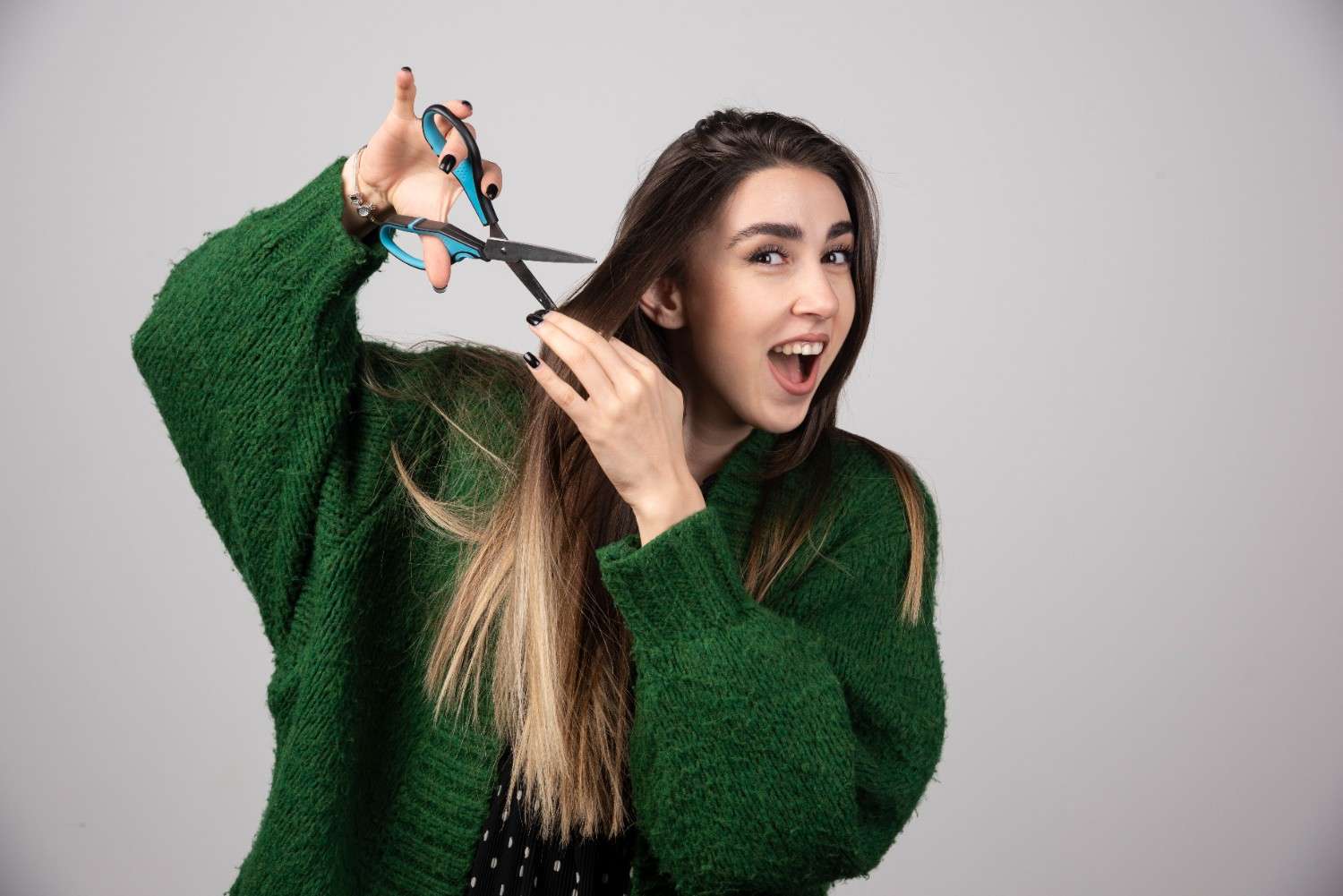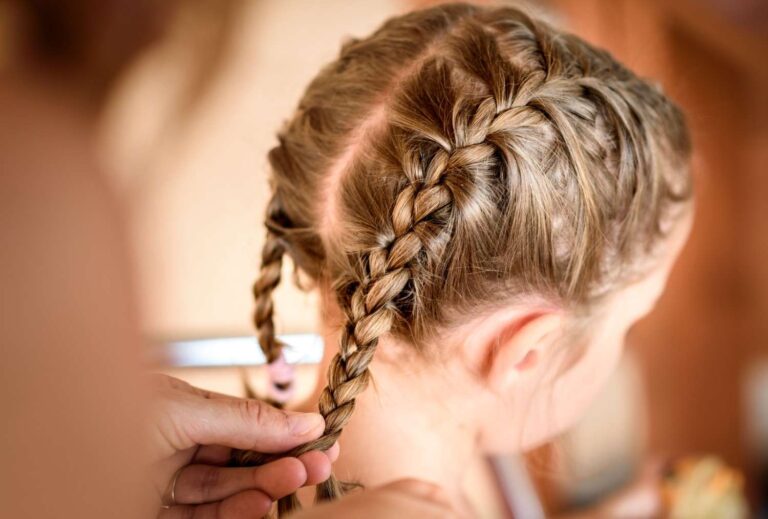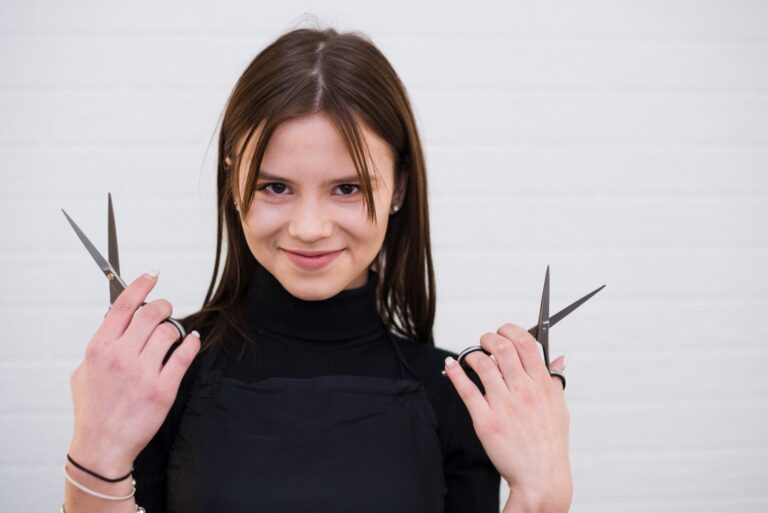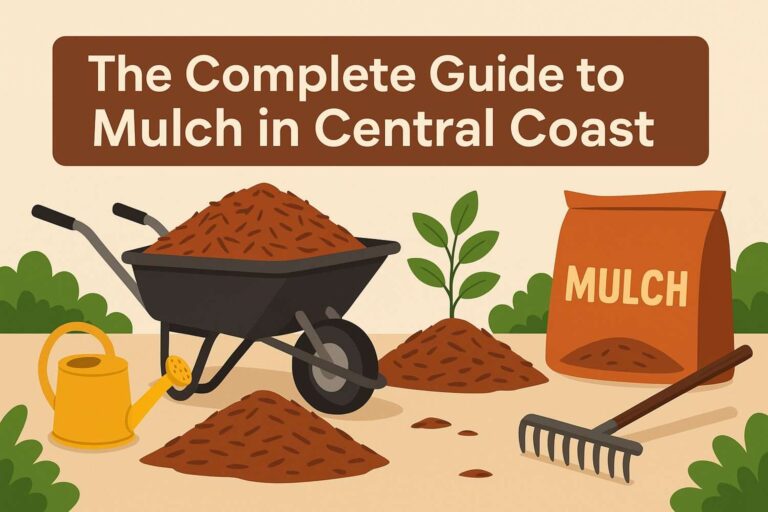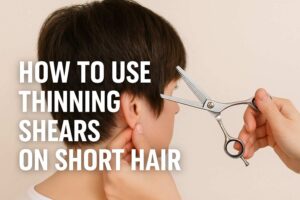I still remember the first time I stared at myself in the mirror, scissors in hand, wondering—should I cut my hair short?
It felt like standing at the edge of a major life decision. Hair may grow back, sure, but how you feel when you walk out of the salon can shape your confidence for months. If you’ve been toying with the idea of going short, this guide will help you make that choice with confidence and clarity.
Why Do People Cut Their Hair Short?
Cutting your hair short can be both liberating and practical. Some do it for a fresh start after a big life change; others simply crave an easier routine. Short hair often feels lighter, looks sharper, and helps your facial features shine through.
That said, it’s not a one-size-fits-all decision. Short hair requires thought—your face shape, lifestyle, and hair texture all play a big part in whether it’ll truly suit you.
What Should You Consider Before Cutting Your Hair Short?

Before diving in, take a moment to evaluate a few essentials. These factors determine whether short hair will be effortless or a surprise maintenance project.
1. Lifestyle
If your mornings are rushed, short hair can be a blessing—less drying time, less shampoo, and a quicker routine overall. However, some short cuts (like pixies or shags) do require daily styling to maintain their shape.
Ask yourself: Do I want something I can air-dry and go, or am I willing to use styling tools regularly?
2. Face Shape
Short hair naturally draws attention to your face. A great stylist will tailor your cut to highlight your best features—soft bobs for round faces, textured pixies for heart shapes, and asymmetrical cuts for square jawlines.
If you’re unsure, a stylist consultation can make all the difference.
3. Climate
If you live somewhere hot or humid, short hair feels like instant relief. It’s lighter, cooler, and dries in a flash. In colder climates, though, long hair can act as a natural insulator. Think about how weather plays into your comfort year-round.
4. Hair Texture
Short hair behaves differently depending on your texture. Fine hair tends to look fuller when cut short, while thick or curly hair may need shaping or thinning to prevent bulkiness. Talk to your stylist about layering options that balance volume and movement.
How Can You Test if Short Hair Suits You?

Before you commit to the big chop, it helps to preview the look. Here are a few reliable methods.
Try a Simulated Look
Pull your hair back tightly into a low bun or ponytail and look in the mirror. This gives you a rough idea of your face with less framing hair. You can also use virtual hairstyle apps to test different lengths and styles on a photo of yourself.
Use the Pencil Test
This classic trick gives a surprisingly accurate prediction.
- Place a pencil horizontally under your chin.
- Hold a ruler vertically under your ear.
- Measure the distance between the bottom of your ear and the pencil.
If it’s less than 2.25 inches (5.7 cm), short hair tends to complement your features beautifully. If it’s more, longer styles may be more flattering.
Consult a Professional Stylist
Stylists have a trained eye for balance, symmetry, and texture. They can analyze your face shape and suggest specific cuts—like a layered bob, textured crop, or undercut—that align with your lifestyle and maintenance preferences.
Pros and Cons: Is Short Hair Worth It?
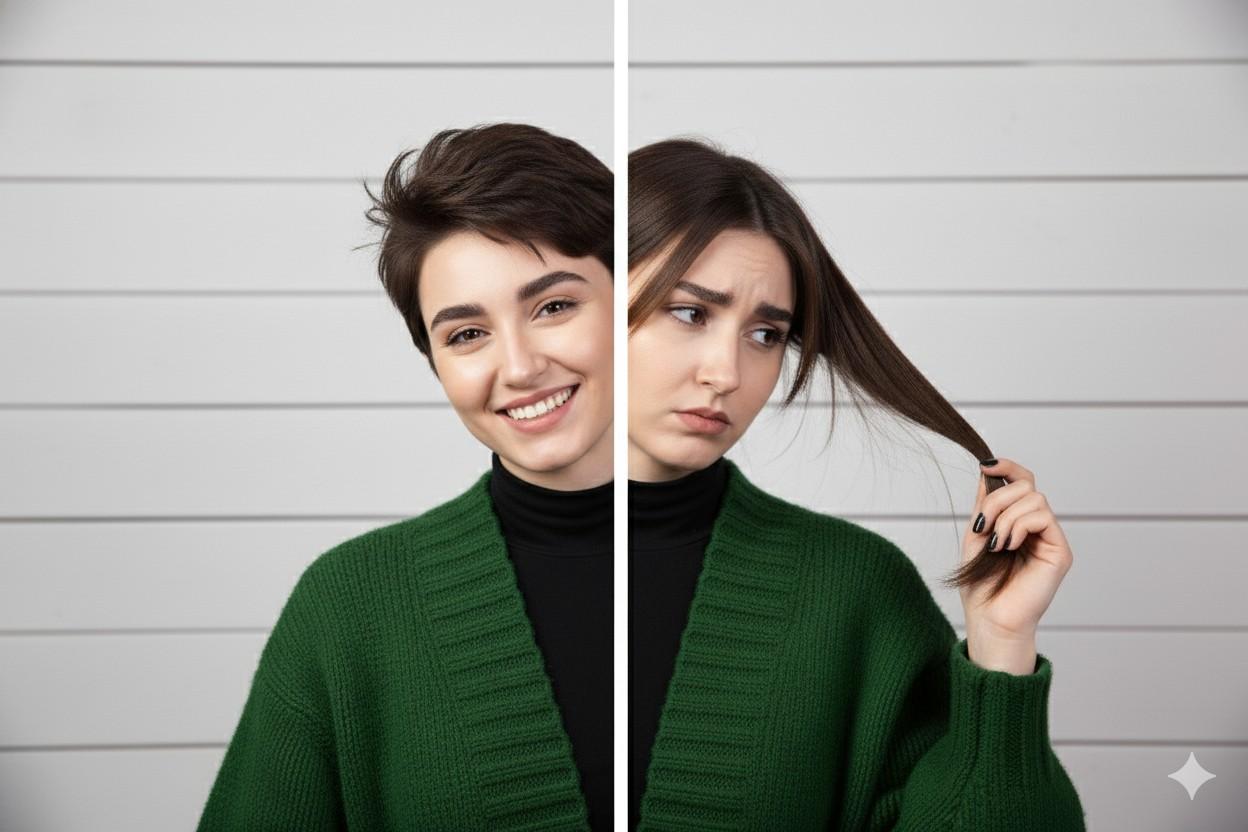
Here’s a quick side-by-side comparison to help you decide objectively.
| Advantages of Short Hair | Potential Drawbacks |
| Low maintenance for washing, drying, and detangling | Can require daily styling for structure |
| Highlights facial features and bone structure | Hair grows back slowly if you regret it |
| Feels light and cool in hot climates | May not suit every face shape or texture |
| Healthier overall—regular trims prevent split ends | Limited styling versatility compared to long hair |
Short hair can be empowering, but it’s smart to go in knowing both sides. The goal is to choose what supports your comfort, lifestyle, and confidence—not just what looks trendy on someone else.
How to Prepare for the Big Chop
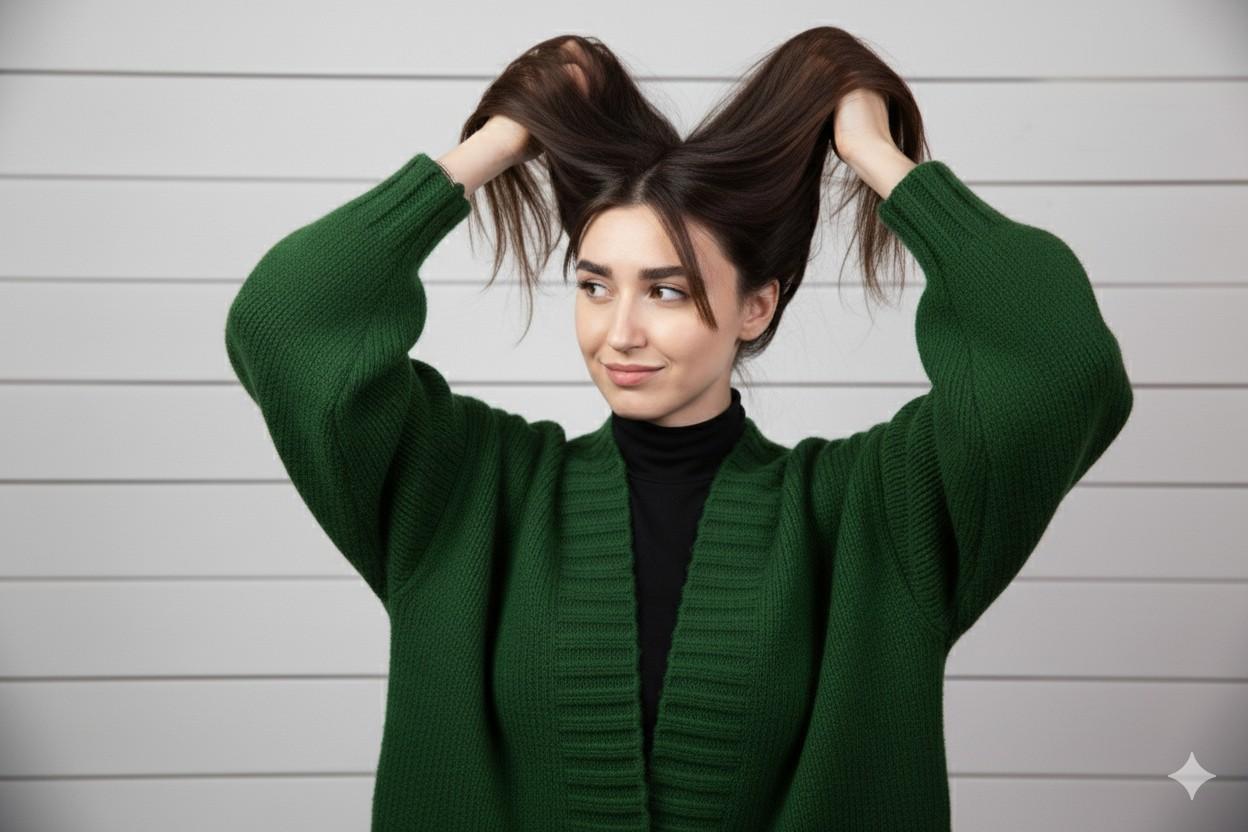
Cutting your hair short isn’t just a style change—it’s an identity shift. Here’s how to approach it mindfully.
Step 1: Gather Inspiration
Look for photos of people with a similar face shape and hair texture. Save a few examples for your stylist. The goal isn’t to copy, but to visualize the kind of energy and aesthetic you want—classic, edgy, or low-key.
Step 2: Start Gradually
If you’re nervous, try a medium-length cut first (like a long bob or shoulder-skimming shag). This gives you time to adjust before committing to a full pixie or cropped style.
Step 3: Plan for Maintenance
Ask your stylist how often the cut will need trimming and what products they recommend. The right shampoo, texturizing spray, or volumizing mousse can completely change how your new look behaves.
Step 4: Own the Change
Confidence is everything. Once you cut your hair short, style it intentionally for a few weeks before judging the decision. It takes time to adapt to a new look and find your rhythm.
Common Mistakes to Avoid
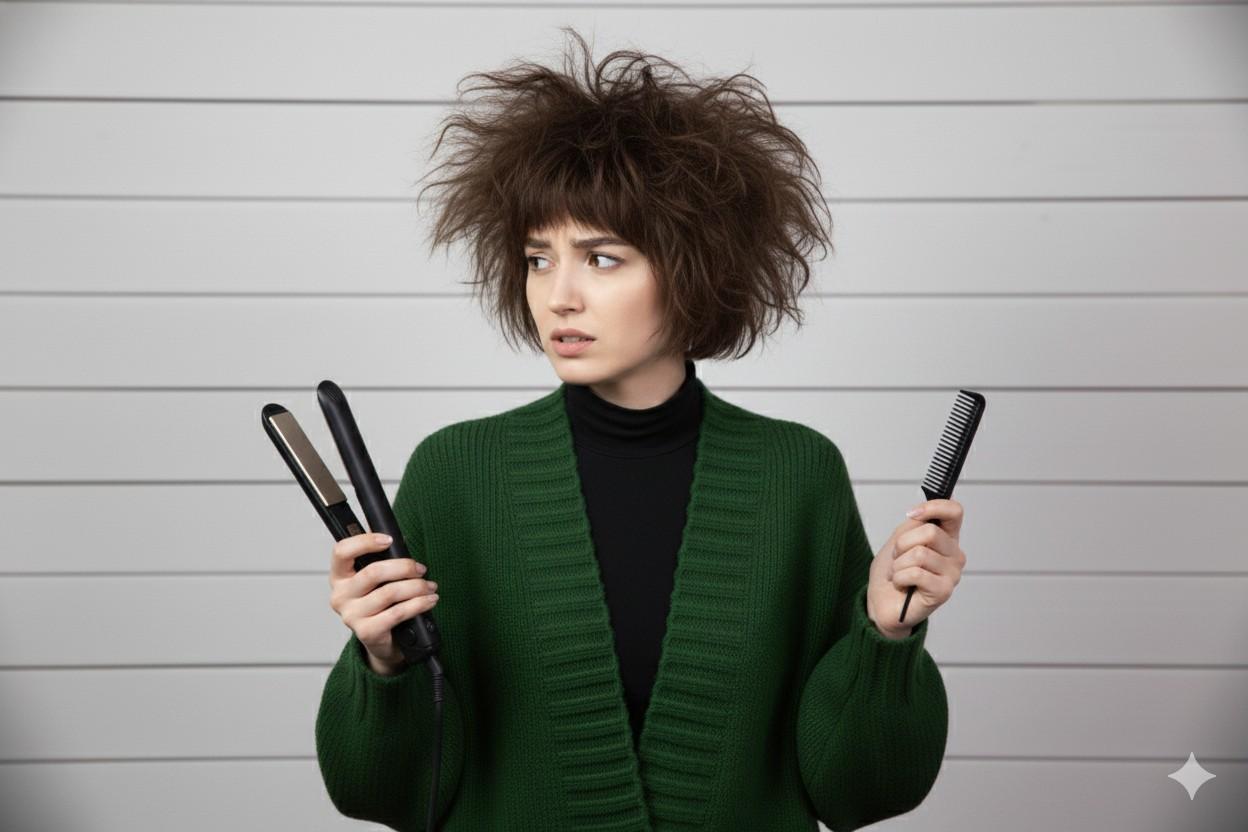
Even the best cuts can fall flat if you overlook these small but crucial points.
- Ignoring your hair’s natural texture: Forcing straight styles on curly hair (or vice versa) creates frustration. Work with your hair, not against it.
- Skipping maintenance: A short cut loses shape quickly. Regular trims every 4–6 weeks keep it crisp.
- Expecting instant comfort: The first week might feel strange. Give yourself time to get used to it.
- Choosing trends over suitability: What flatters someone online may not suit your hairline, density, or features. Personalization is key.
Also Read: Short haircuts Asian
FAQs About Cutting Your Hair Short
1. Will short hair make my face look bigger?
Not necessarily. The right cut can actually balance proportions. For example, volume at the crown elongates round faces, while angled bobs slim the jawline. Ask your stylist to adjust layers strategically.
2. Does short hair age you?
It depends on the style and finish. A blunt or overly severe cut can emphasize lines, but soft layers or textured edges create a youthful, vibrant effect. Short hair paired with healthy shine often looks timeless, not aging.
3. Can I still style short hair differently?
Absolutely. You can experiment with side parts, accessories, waves, and even mini-braids or slicked-back looks. Short hair is surprisingly versatile once you learn how to play with volume and texture.
4. How long does it take to grow back if I regret it?
Hair typically grows about half an inch per month. If you cut it into a pixie, expect around a year to return to shoulder length. That’s why starting with a mid-length option can be a good transition step.
5. Should I cut my hair short myself?
It’s tempting, but not ideal. Professional stylists understand balance, blending, and shaping—skills that are difficult to replicate at home. A small salon investment prevents uneven lines and future regret.
A Fresh Start, One Snip at a Time
Cutting your hair short isn’t just about changing your appearance—it’s about reclaiming simplicity and expressing who you are. When I finally took the plunge, I realized the real shift wasn’t just in my hair, but in how I felt each morning—lighter, freer, more me.
If you’re still wondering should I cut my hair short, remember this: hair grows, but confidence takes nurturing. Choose the cut that makes you feel bold, beautiful, and authentic—because that’s what will truly turn heads.





